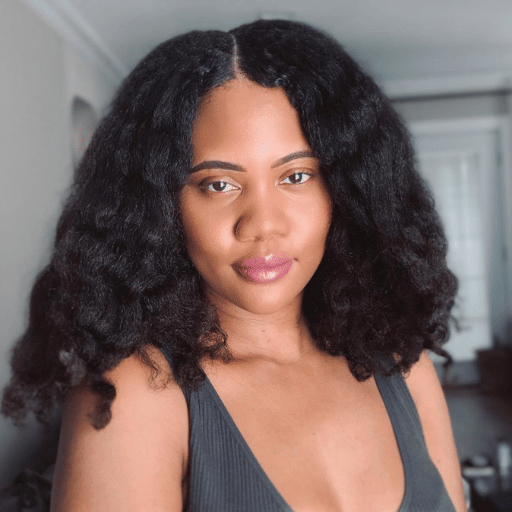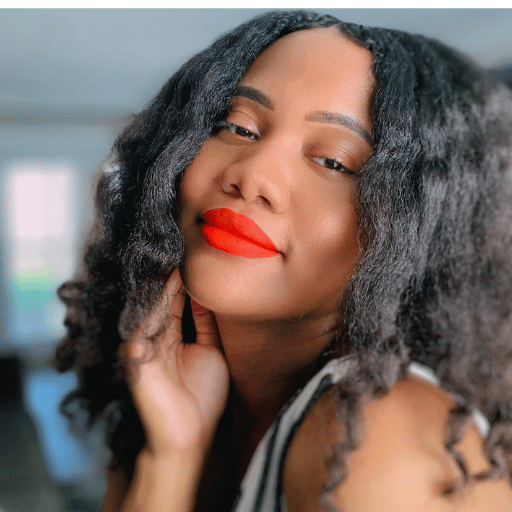The topic of a hair porosity test is one of the most inquired and talked about subjects of the the natural hair community. However, many of us simply do not understand why it is important to be familiar with how our hair is structured. Before you go buying products and styling your hair, you should have a basic understanding of what hair porosity means, how it relates to your own hair and how you can care for it. Let’s break this down so you can make better styling choices and get longevity out of all your hairstyles.
This post is all about hair porosity test.
This post may contain affiliate links, which means I’ll receive a commission if you purchase through my link, at no extra cost to you.
What Is Hair Porosity?
Hair porosity refers to the ability of your hair absorb and retain moisture. When we speak about hair porosity, we are talking about the external layer of the hair strand, known as the Cuticle layer.
The cuticle layer is the layer of your hair that lays like the scales on a fish, blocking and allowing the passage of moisture in and out of the hairs inner most layer, known as the Medulla.
It is extremely beneficial to learn about your hairs porosity, as this could help you navigate through the abundance of hair products that are marketed toward us in the hair care aisle of any retail store.
There are three most common categories to look at when considering your hair porosity. That is Low Porosity, Normal Porosity (or medium) and High Porosity.
Low Porosity– The scales on the cuticle layer of the hair strand are tightly packed together, preventing moisture from penetrating through to moisturize the hair on a deeper level. Products often sit on top of the hair and can easily weigh it down if the formulation is too heavy. This porosity can be a bit challenging to manage if you aren’t aware of porosity and how to manage it to your advantage,
Normal Porosity (or medium)- Moisture can easily pass through the cuticle layer to the inner layer of the hair. There is a normal balance allowing for adequate absorption of products and retained moisture.
High Porosity– The cuticle layer allows for moisture to easily penetrate, but leave the hair just as fast. The hair is damaged and is often dry to the touch no matter what you use to moisturize it. It is highly prone to frizz and can be damaged quite easily if you’re not careful about chemicals and direct heat.
Hair Porosity Test
Even though there are three different levels of porosity, it is possible to have one, two or all three types on different portions of your head. The different porosity levels are categorized as Low, Medium and High. To get the MOST out your hair regimen, you should know where your hair mostly falls on that spectrum of classification. The easiest way to find out is explained below:
The Strand & Water Test
Take a strand of clean shed hair and drop it into a glass of water for 5 minutes & take note of where the strand naturally situates itself in the water and observe:
The Hair Strand Floats- LOW POROSITY
This hair porosity test reveals the hair strand is floating because it is unable to allow the water into the strand or let it out. The pores on the hair strand barely opened up to let moisture (the water) in.
Although it may seem like this hair can handle a slightly heavier application of products, it is best avoid being too heavy handed with your product application. You can easily weigh the hair down and as you may had already heard somewhere before, less is usually more.
Characteristics of Low Porosity Hair:
- Hair looks healthy.
- Hair feels smooth to the touch.
- Hair absorbs moisture easily once cuticle layer is open on the strand with indirect heat or steam.
- Hair can handle a slightly heavier formulation of products, but needs a light handed application.
Best techniques low porosity hair:
- Using indirect heat is a MUST in order to open the cuticle layer of the hair and get maximum absorption of moisture and retain it. Use a steamer or hooded dryer for all deep conditioning and use a hooded dryer to set all styles into place.
- Use warm water when washing hair in the shower or sink
- Rinse hair with cool water to reduce frizz after deep conditioning treatment
- Milks, Butters and sealing oils like Jojoba oil are best used on this hair type.
The Hair Strand Doesn’t Sink or Float – MEDIUM POROSITY
For this hair porosity test, the hair strand did not sink or float because it was able to easily absorb and retain the water molecules. Or you may notice that it sinks slowly to the bottom or stays in the middle of the amount of water you have it in.
Characteristics of Medium Porosity Hair:
- Hair easily accepts moisture and retains it
- Can be easily styled and often showcases a smooth frizz free result
- Full of bounce
- Hair looks healthy
Best techniques for this category:
- Avoid too many products with protein listed in the top ingredients
- Be light-handed with products so you don’t weigh curls down
- Diffuser works well with setting curls into place
- Light oils such as grape seed oil work well for this hair type.
The Hair Strand Sinks – HIGH POROSITY
In this hair porosity test, the cuticle layer allows a lot of the water to fully absorb due to possible holes or cracks in the hair shaft. Hair needs a lot of product application to feel moisturized. This hair porosity type can become easily weighed down and snap off very easily if damaged.
Best techniques for this category:
- Use a protein-based deep conditioning treatment weekly/biweekly to help strengthen strands
- Avoid using products with humectants or glycerin, because these products attract more water into the strands which can in turn weigh the hair down even further.
- Use very light moisturizing products.
Characteristics:
- Hair often looks frizzy
- Hair often looks dry, lacks shine & luster
- Hair dries rather quickly
Final Thoughts On Porosity
So now that you have an idea of what is hair porosity, keep in mind that as stated before you might have a mixture. Maybe your ends were previously color treated, relaxed or even heat damaged so you’re dealing with some high porosity characteristics.
You will have to tailor your regimen so that it fits your hair qualities. The best way to tackle this is to start with light products and then build your way up to see what works and what doesn’t work. Pay attention to what you hair is trying to tell you and take it from there.
This post was all about hair porosity test.
More on Hair Porosity:
21 Best Deep Conditioners For Low Porosity Hair!
Deep Condition Low Porosity Hair: A How To Guide
What Is Dry Shampoo: Is It Safe & How To Use!






Recent Comments